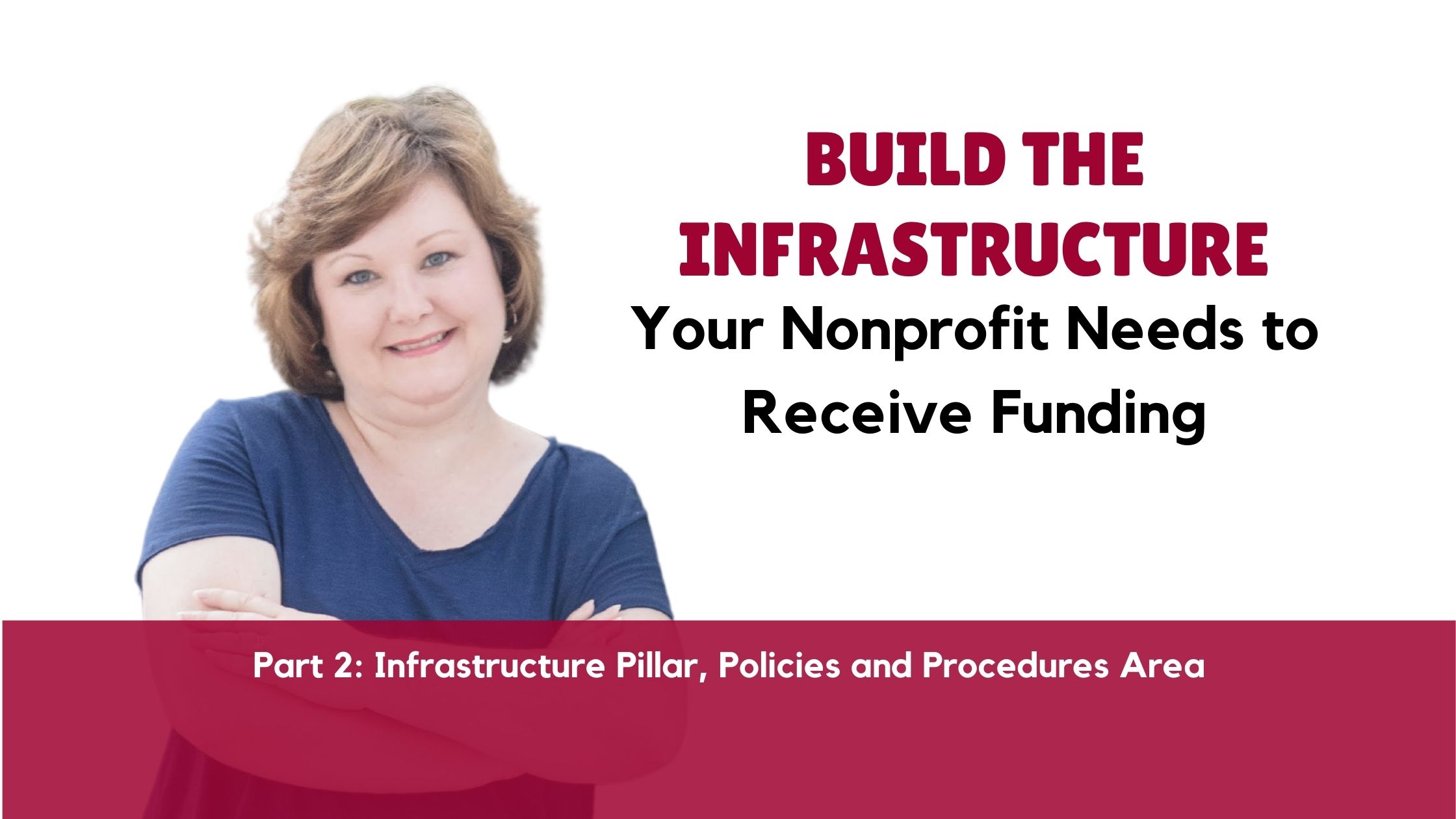Last week, we talked about the importance of having a good governance structure in place as the foundation of your nonprofit. This week, we’ll discuss the policies and procedures your nonprofit needs to be compliant with your tax-exempt status and to receive funding. Without these in place, you could be putting your nonprofit at risk.
Management Policies and Procedures
A policy is a written set of rules that all Board members, staff, and volunteers will have to follow. Procedures are steps to follow to get a desired result. Let’s start with the first Policies and Procedures you need because they are required on your IRS Form 990. Here is a list with where to find them on the IRS Form 990:
- Conflict of Interest Policy (Part VI, Section B)
- * Executive compensation approval process (Part VI, Section B)
- ** Document Retention and Destruction Policy (Part VI, Section B)
- ** Gift Acceptance Policy (Schedule M)
- * Meeting minutes document practices (Part VI, Section A)
- * Review process of Form 990 by the Board of Directors (Part VI, Section B)
- ** Whistleblower Policy (Part VI, Section B)
- * Joint Venture Policy, if applicable (Part VI, Section B)
- * Policies regarding chapters, affiliates, and branches, if applicable (Part VI, Section B)
The double asterisk indicates policies required by law. The single asterisk indicates policies and procedures you may already have. Let’s talk a little about what those policies mean.
Conflict of Interest Policy:
A conflict of interest is defined as an interest that is not in the best interest of the nonprofit, the Board, the donors, volunteers, and the public. On your IRS Form 990, you are required to have a conflict of interest policy, which should be kept in a document you share with your Board. The policy should state that the Board must consider any conflict of interest related to the nonprofit’s financial interests. The policy should also establish procedures your Board should follow when considering such a conflict of interest.
Executive Compensation Approval Process:
Your IRS Form 990 requires you to state how you approve executive compensation. You should also state what procedures your Board must follow to approve executive compensation. Your policy should state how the Board reviews executive compensation.
Document Retention and Destruction Policy:
Your nonprofit’s tax exemption depends on the records it holds. The IRS requires that you retain records for five years. Your records should be organized and stored as you would keep records for your business. The IRS and the Federal Government require that you keep your nonprofit’s records for five years.
Gift Acceptance Policy:
Gifts are an important part of the nonprofit community, and donors deserve to know that their gift will benefit a nonprofit organization. This policy should set out when your Board will review all gifts and how it will decide what to do with the gifts. The policy should state whether your Board will use an outside consultant to appraise certain gifts.
Meeting Minutes Document Practices:
Each year, your Board is required to review the nonprofit’s minutes of the previous year’s Board meeting. The minutes must be kept for two years after the meeting.
Review Process of Form 990 by the Board of Directors:
The IRS requires your Board to review the financial information on your IRS Form 990. The review should be conducted by your Board, not your staff. The IRS recommends that your Board has a set meeting schedule for reviewing the Form 990.
Whistleblower Policy:
As nonprofit organizations grow, so do their problems. When problems arise, whistleblowers may come forward. A policy should state what the nonprofit will do to protect a whistleblower and what it will do to encourage a whistleblower to come forward.
Joint Venture Policy:
Your nonprofit may be in the beginning stages of a joint venture. A joint venture is a form of business organization that allows your nonprofit to share profits and losses with a business. Your nonprofit should also have a written policy on joint ventures.
Policies regarding chapters, affiliates, and branches, if applicable:
Each of these entities is a separate legal entity and should be treated as such. Each entity should have its own Board, staff and volunteer list. These organizations may come together to create a joint venture. When this is the case, the entity that creates the joint venture should have a policy about how the nonprofit will treat the joint venture.
If you have any questions about your policies and procedures for the IRS Form 990, please contact your attorney.
Money Handling Policy and Procedure:
Your nonprofit’s money handling policy and procedures will differ depending on the size of your organization. Your policy should be based on the standard for your state if your nonprofit is located in a state that has a state-wide standard for nonprofits. The standard may differ by county or city. Typically this policy and procedure puts in writing how the organization receives money to how they deposit the money.
While it’s not required by the IRS Form 990, a Money Handling Policy and Procedure is essential to put into place now.
Systems
Some systems will be needed in this stage too. You will need an accounting system. The board of directors must have access to the accounting system, and you will need to have your accounting system generate reports on the status of your finances and the board’s finances. You’ll need an inventory system. This will keep track of your supplies and equipment. You’ll need a job posting system. If your organization is hiring, you’ll need to have a job posting system in place to ensure that you are hiring only qualified individuals.
Policies and Procedures for Funding
To receive funding from any source, your nonprofit must have written policies and procedures in place that conform to the requirements of the funding organization. The policies and procedures must be clear, concise, and easy to follow. They must also be up-to-date, accurate, and consistent with your governing documents. Your board must approve all funding-related policies and procedures. All staff involved in the funding process must be familiar with them and adhere to them. Failure to do so can result in the loss of funding, legal action, or both.
Fundraising Policies and Procedures
When you are fundraising, your nonprofit must have in place written policies and procedures that clearly state how you plan to raise funds. These policies and procedures should be reviewed, approved, and updated periodically. Your board of directors should approve and review these policies and procedures.
Your nonprofit must have written policies and procedures for soliciting and accepting donations from individuals, foundations, corporations, and other fundraising sources. Your policies and procedures should clearly state the sources of funds, the amount of money you are soliciting, and how you will distribute the funds. Your policies and procedures should also clearly state the fundraising methods used to solicit and accept funds and the frequency of solicitation.
A resource to help you write these policies and procedures is
Association of Fundraising Professional’s Developing Fundraising Policies and Procedures
Fundraising Systems
You’ll need a donation tracking system. When someone donates to your organization, you’ll need to have a way to track it and keep records of it. Most people start out using an excel spreadsheet. Givebox has a free basic Donor Management System. Little Green Light is an inexpensive Donor Management System when you get it through TechSoup.
Conclusion
We continued to explore the Build a Successful Nonprofit Framework this week by exploring Pillar 1: Infrastructure, Policies and Procedures Area of the framework. This area starts with the policies and procedures needed to keep you compliant with the IRS. We also talked about the policies and procedures you need in your fundraising. Next week, we move to the Fundraising Foundations Area of Pillar 1.

